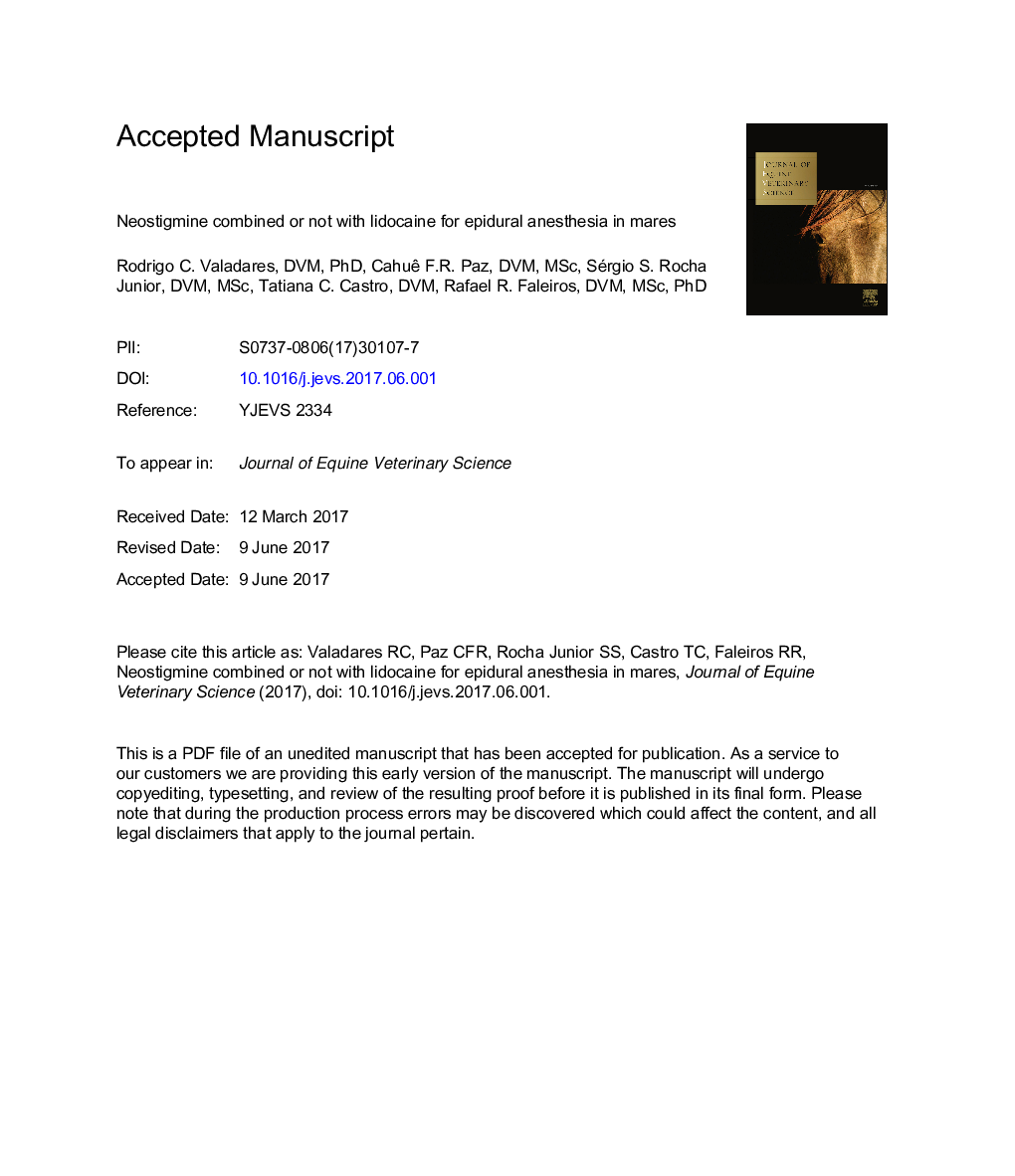| Article ID | Journal | Published Year | Pages | File Type |
|---|---|---|---|---|
| 5535664 | Journal of Equine Veterinary Science | 2017 | 21 Pages |
Abstract
Only a few studies have examined the effect of neostigmine combined with lidocaine on epidural anesthesia in gelding horses. The purpose of this investigation was to evaluate clinical effects, ataxia, and the sensory block duration caused by adding neostigmine to epidural lidocaine in mares. Three independent treatments including neostigmine (NEOST), 2% lidocaine (LIDO), or 2% lidocaine combined with neostigmine (LIDO + NEOST) were administered to six mares using epidural catheters. Each animal received all treatments. A cutaneous pinprick nociception test with fine needle was used in perianal, sacral, and lumbar dermatomes in both antimeres. The response (attempt to kick, movement of the limbs, tail, or head toward the stimulus) was assessed immediately before and after each treatment (every 15Â minutes in the first hour, and then every 30Â minutes thereafter until the animal would go back to basal response). Analysis of variance (P < .05) was used to compare the treatment responses. The NEOST group did not show sign of anesthesia in any of the dermatomes. The LIDO and LIDO + NEOST groups showed sensory block of the perianal and sacral dermatomes, but not of the lumbar dermatome. The mean duration of anesthesia on perineal dermatomes was 58.4Â minutes using lidocaine alone and 64.2 minutes when neostigmine were added to lidocaine with no significant difference between these two treatments (P > .05). No relevant changes in clinical and behavioral parameters were observed. In conclusion, adding neostigmine to lidocaine has not brought any relevant benefits to the epidural anesthesia in clinically normal mares.
Keywords
Related Topics
Life Sciences
Agricultural and Biological Sciences
Animal Science and Zoology
Authors
Rodrigo C. Valadares, Cahuê F.R. Paz, Sérgio S. Rocha Junior, Tatiana C. Castro, Rafael R. Faleiros,
